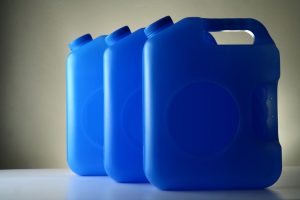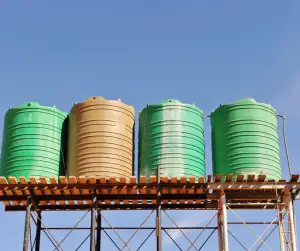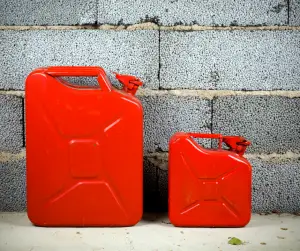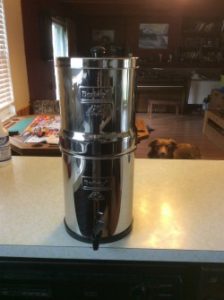Water is critical to life and going even a short time without it does not bode well for survival.
Given our access to an abundance of clean water, it can be easily overlooked as a resource that will always be there. But this is one resource that cannot be overlooked in our emergency preparations.
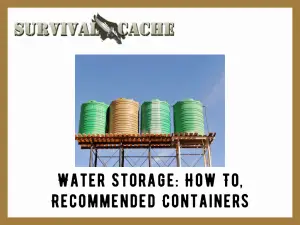
It has been suggested that people should have three days worth of food and water in their emergency supplies
While it is better than nothing, that amount, in my opinion, is woefully low.
We can go for several weeks without food but three days without water and we will be in dangerous territory.
Take a look at major disasters, either man-made or natural, around the world. The aftermath of these events is seldomly resolved within a week, which is what that three-day water supply might serve.
Because water is so important to our survival and well-being, it is critical to have a backup water plan and even better to have an emergency supply of clean drinking water.
If you are unsure of how to begin this process you have come to the right place to find out what to store water in, where to store it, how much water is needed, and what not to do.
SKIP AHEAD
Ways To Store Water
Container Materials
Plastic
Plastic containers are by far the most widely used. They are relatively cheap, durable, and lightweight.
The problem with this material is that over time they can begin to leach chemicals into the clean water stored within. When searching for plastic containers be sure they are BPA free and rated for food-grade use.
Steel
Steel is not as popular primarily because of price. Any steel container of usable size for water storage is going to be rather expensive.
While this material is very durable and will last a long time, it will be heavy, and certain cleaning chemicals can be detrimental to the steel.
Glass
Again, not a very popular type of container due to the fragility of the material, and any glass containers of a decent size will have a higher price tag.
The upside is that glass will last a long time and is easy to clean.
Container Sizes
After deciding what material you want your container to be made from, the next step is deciding on size.
The size of the container you choose is going to depend on the amount of storage space available and how many members are in your group.
Large Containers
The sky is pretty much the limit with large containers. If you have space and funds available, containers that can hold hundreds, and even thousands of gallons of water can be purchased.
Large vessels like this have the option of being stored above ground as well as below.
Big containers like this are not well suited for apartment dwellers or even many people that live within city limits as they do require a lot of space.
One of the most popular options for storing a lot of water is the fifty-five-gallon drum or barrel.
They are affordable, durable, easy to move when empty, can be stacked, and can also be modified or personalized for different setups.
The fifty-five-gallon drum is a good large container option for many homeowners and even in some apartments.
Small Containers
When storage space is a premium, many small containers can be used instead of a few large containers. There are several options available such as “jerry can” styles or even jugs and bottled water bought at the grocery store can be used.
The great thing about small containers is that they can be stored almost anywhere. In cabinets, basements, behind furniture, or even in a closet.
Small containers are also highly portable should you need to move on to a safer location.
Emergency Containers
Another container option is one that is specifically designed for the disaster-ready individual.
These kinds of containers are generally highly portable and pack away easily when not in use.
Two examples of emergency containers would be the Water Bob and Water Bricks.
The Water Bob is essentially a large, durable plastic bag that is designed to be used with a bathtub. The idea is when an emergency arises, the bag is placed in a bathtub and filled with the faucet. It can hold up to a hundred gallons of water and when it is not needed, the container conveniently folds up to be stored away.
Water Bricks typically hold just a few gallons of water but are quite efficient in how they stack on one another. Their low-profile design allows them to be tucked away in spaces other containers wouldn’t fit, such as under furniture or bedframes.
Storing and Maintaining Water
Water containers are best kept in cool, dry locations, out of direct sunlight, and not near other chemicals.
If a location fits this description water can be stored there.
Popular places to store water are:
- In a basement
- In a garage, if it does not experience temperature extremes
- Closets
- In unused kitchen space
- Behind or under furniture
- In outdoor sheds, if it does not experience temperature extremes
Maintaining a Water Supply
There are a few housekeeping tasks that will help to keep a water supply in optimal condition
Keeping Track
Once a container has been filled, it is best to mark it on the container when it was sealed. Water does not go bad but bad things can happen to it. Knowing how long a container of water has been stored will help in judging its state of potability when it comes time for a drink.
Testing Kits
There are testing kits available that can inform you of a water’s pH or if it contains harmful contaminants. Depending on how involved you wish to get in water storage, a kit like this might be something to consider
Purification
Water can look crystal clear and be tightly sealed in a protective container but that is not a guarantee against bacteria finding its way inside.
There are several ways that water can be purified. Using tablets, UV light, but the most popular and affordable method is to use chlorine or bleach.
Bleach is incredibly cheap, readily available, easy to use, effective, and most people already have it in their homes.
When using this method you are going to want to use regular old bleach and not the scented kind. It also helps to have a measuring device, a dropper, pipette, or even a drinking straw can be used.
The general rule of thumb is to use eight drops of bleach per gallon of cleaned water. This means the water should have already gone through a process of filtering and boiling.
Eight drops per gallon into this type of water should be sufficient in making it potable. This process can be done once a year depending on the water’s storage preparations.
How Much Water To Store
“How much water should I store?” This is the million-dollar question that is always asked but there are several things to consider before answering.
What the Body Requires
Our bodies are primarily made up of water which we lose all the time through breathing, sweating, and waste removal from the body (urination and defecation)
The amount of water a body needs depends on physical exertion, temperature, how much food is consumed, types of foods consumed, medications that are taken, and other medical considerations.
It is estimated that a person needs between 2-3 liters (0.52-0.79 gallons) of water daily but just like the rules of 3, this is not absolute.
The rule of thumb that has gone around for a while is one gallon of water per day. Which would fall on the high end of what is needed based on the above bodily requirement.
But I would recommend on at least doubling this amount to two gallons of water per person per day.
This is because, during an emergency, the body is going to be stressed, subjected to more physical exertion, and may have to work harder to regulate internal temperatures.
But remember, the above amount of water is strictly for drinking or obtaining through the consumption of foods. This does not include everything else we use water for.
Other Water Uses
According to the USGS, one person uses approximately 100 gallons of water every single day.
That is a lot of water!
Most of that water is used for flushing toilets, taking showers or baths, washing dishes, and washing clothes, with the least amount used for the actual act of cooking.
But do not worry, a few ways to drastically reduce the amount of water needed during an emergency are:
- Use disposable dishes and utensils
- Take washcloth or sponge baths
- Use an alternative, emergency toilet
- Hand wash clothes
How Much To Store
Three gallons of water per person per day would be the minimal amount of water I would store to use for drinking, cooking, and minimal hygiene usage such as brushing my teeth.
Note that this does not take into account cleaning clothes, general cleaning, sanitation needs, and bathing.
So, based on this recommendation one person would need ninety gallons of stockpiled water for thirty days. For a family of four, that number goes up to 360 gallons of water.
While I believe the above amount is still on the low end, it is a good goal to aim towards for short term emergencies. When it comes to water, it is better to store too much than not enough.
What Not To Do
- Do not store water directly on the floor or concrete. The containers should be raised off floors and placed on pallets or shelving units.
- Do not store water in containers that other products were previously stored in such as foods, chemicals, cleaners, and other liquids.
- Do not store water around cleaning supplies, chemicals, and other harmful solvents.
- Do not store water in disposable containers that are only meant to be used once.
- Do not use bleach to purify water that is being stored in a metal container as adverse reactions can take place.
- Do not store water in open containers where contaminants can easily find their way in.
- Do not subject storage containers to extreme temperatures. Freezing temperatures can cause containers to burst and hot and humid conditions can impact the integrity of a container or be a breeding ground for bacteria.
Unprepared!
There may come a time where your emergency water supply has been ruined or you did not have enough to begin, and an emergency situation is on its way.
In this scenario you are going to want to fill up all of the sinks and bathtubs in your home as well as any available containers like pots and large bowls.
If you are able to do this before the water supply is turned off or damaged, you will have decent short term supply of drinking water.
Open Questions Regarding Water Storage
Q: Can bottled water be stored in a hot garage?
A: It is not a good idea to store bottled water in a hot garage. Hot temperatures can cause harmful chemicals to leach from the plastic into the drinking water. The same goes for leaving bottled water on the seat of a vehicle.
Q: How long is bottled water good for?
A: The plastic bottles used in bottled water are not designed to be long term containers. Even stored at optimal conditions, it is a good idea to rotate bottles yearly.
Q: Does water go bad?
A: Water itself does not go bad but it is subject to contaminates that would be harmful for human consumption. These contaminants can come from a wide array of sources including bacteria, leeching containers, and industrial runoff just to name a few.
Q: Can tap water be used for storage?
A: Yes, as long as the source of the tap water is providing safe, clean drinking water. Filling containers with tap water is one of the most affordable ways of storing water because it only costs pennies per gallon.
Wrap Up
Whether you are new to water storage methods or have been doing so for a while, I hope you enjoyed the article and learned something new.
Thanks for reading and stay prepared!
How do you like to store water? Sound off in the comment section below and let us know!


